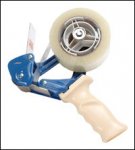I am an electrician for 18 years. I just started running a little surgical center job. My apprentice and I built a small print table out of wood. I keep getting new sets of prints as changes are approved. My question is what is the most efficient way to protect and organize the prints. On good idea I just recently learned is to fold duct tape around the edges of the prints and that keeps them from getting torn. I'm a little new at management and any advice in this area would be appreciated as far as organizing things and delegating work planning tasks.
you can laminate them, but it gets pricey quick like.
i ask, very nicely, for the autocad drawings the prints come from, with the x-refs.
then, i print out 13x19 on my inkjet, or half size at kinkoes around
the corner. mark em up with as builts and notes, transfer those back onto the
drawings i was given, and print them... so my as builts are up to date as the
work progresses. re print them as needed.... it's a few bucks a sheet at kinkoes.
i usually do them 24" wide, and usually all i need are the panel schedules, and
floor plans.
usually they will just want to send you a PDF, and not the autocad drawings.
that sucks. then you can't do asbuilts on a layer, or get dimensions, etc.
it's awesome for pad work.... i draw what i want to put in the slab, then dimension
it, and print it..... then i have an outline of the slab, with control lines, and i just rock.

